Affiliate links on Android Authority may earn us a commission. Learn more.
I love the Garmin HRM-FIT's accuracy, but I'm sticking with my sweaty old chest strap — here's why
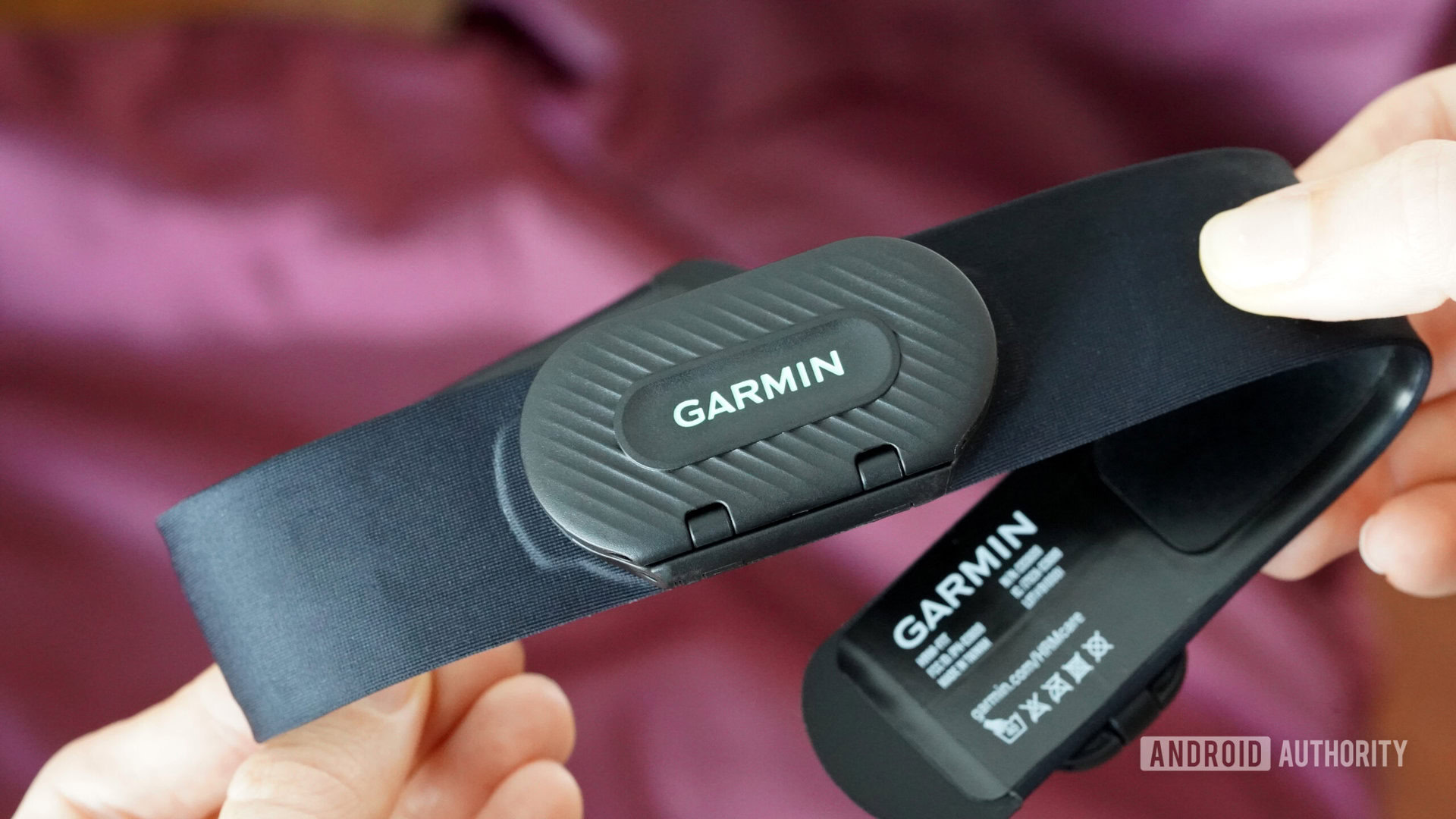
Not every female-centric fitness hurdle needs a tech-based solution. When I’m ready to stop choking on my own hair as my unruly ponytail swings across my face, for example, I can probably braid it. However, there are many real shortcomings in fitness trackers and equipment designed for men first. In light of this, seeing a company prioritize women and female designers is always exciting. The Garmin HRM-FIT is one of the latest wellness tools launched with women in mind. The device provides an alternative way of monitoring heart rates, and after two weeks of testing, I’m impressed by its accuracy, even if I’m not ready to adopt the new design.


It’s hard to beat Garmin (that’s a heart rate pun)
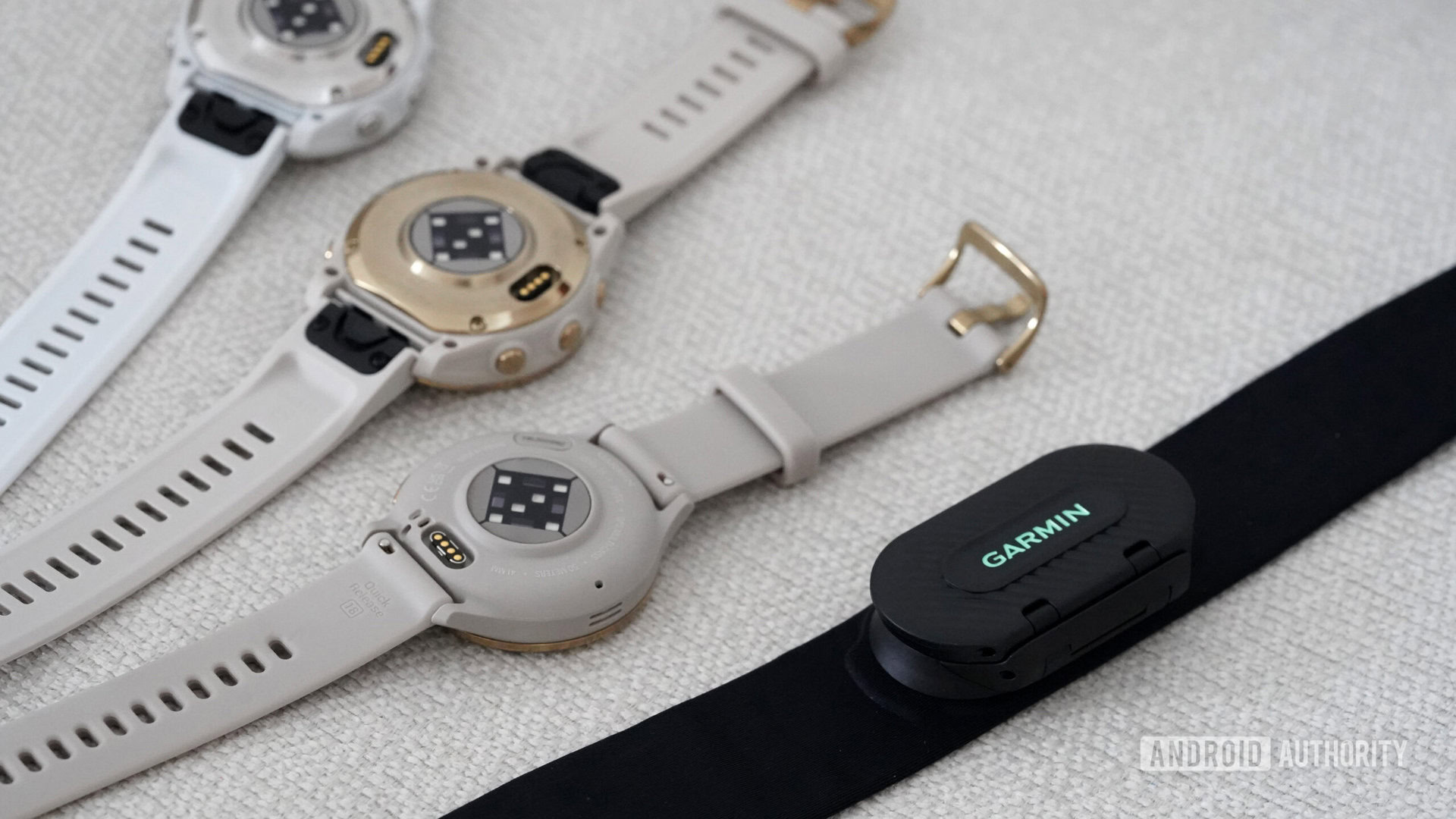
If the word Garmin calls back the image of a dashboard navigator or detailed mapping device, you’re not alone. The company still excels at Global Positioning System tech, and that expertise has made its way into countless fitness tracking watches. However, Garmin also offers a much broader ecosystem of wellness tracking than simply tracing routes or counting steps. One area it shines is collecting heart rate data.
We’ve tested many of Garmin’s top watches, including those with the latest generation 5 Elevate optical heart rate sensor. Not only do Garmin’s devices provide data as accurate as other market leaders, but the results also align with our dedicated chest straps despite wrist-based tracking being trickier. Of course, Garmin also sells its own collection of chest strap heart rate monitors, which are generally well-reviewed regarding accuracy as well.
The HRM-Fit lives up to Garmin's consistently reliable heart rate tracking.
But all that brings me to Garmin’s latest offering, the HRM-FIT. It’s specifically designed to track from the chest without strapping anyone in. I’ll get to the design below, but my first priority is to discuss whether the device is capable of delivering reliable readings. Once I finagled the device to my sports bra (and hyped myself up enough to complete a workout), I started testing the HRM-FIT with a 30-minute workout. For comparison, I wore the highly-rated Polar Verity Sense on one arm and an Apple Watch Ultra 2 on the opposite wrist.
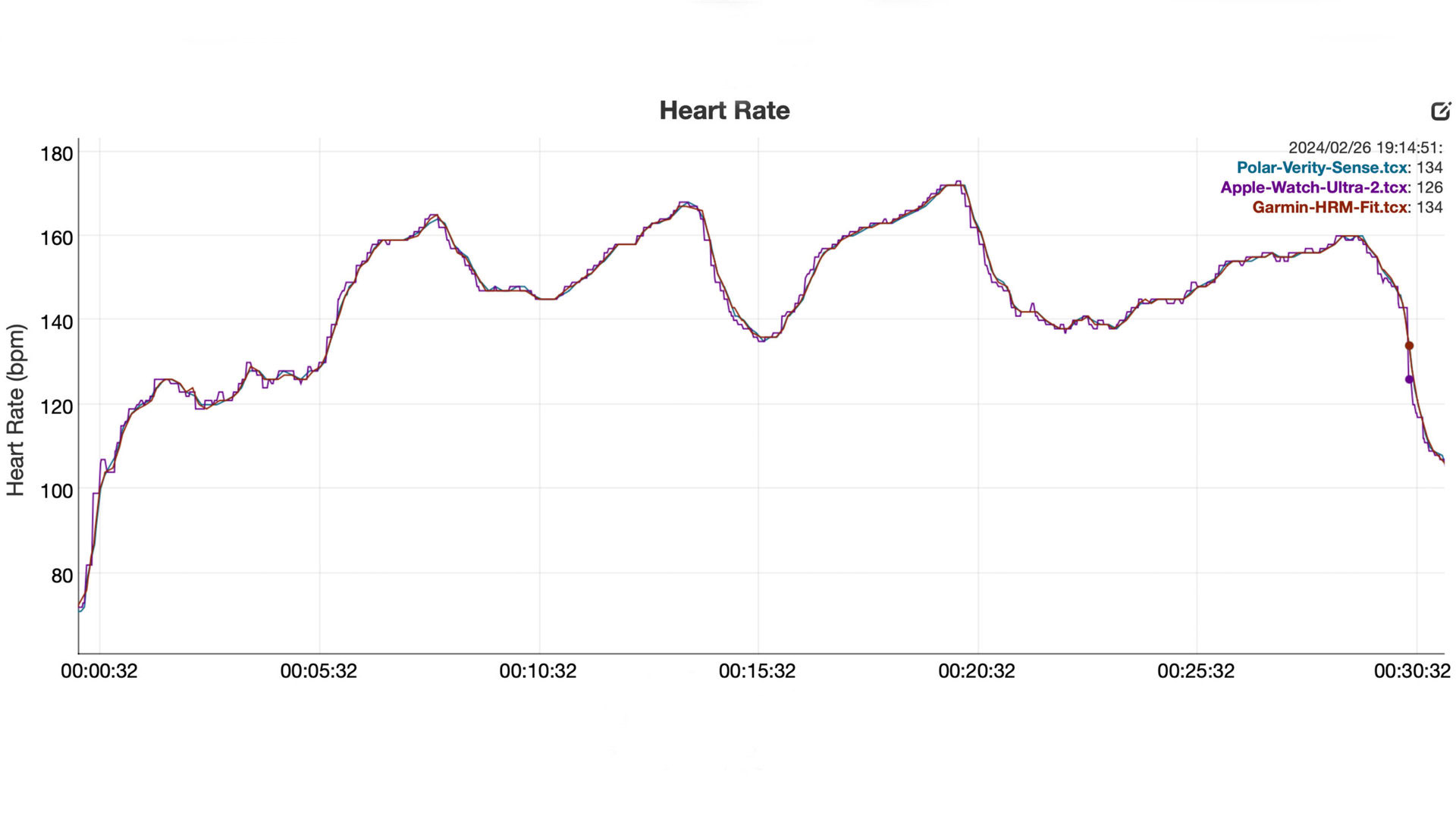
As you can see in the chart above, the devices recorded nearly identical stats throughout my workout, with similar peaks and valleys as I integrated sprints and recovery intervals. Over the course of two weeks, I repeated this multi-device tracking effort during a variety of workouts. The HRM-FIT remained neck and neck with the others, whether I was running, indoor cycling, weight training, or attempting a HIIT workout with entirely too many planks. You will always see minor variations from device to device, but I was very happy with the band’s reliability.
Fit for female users
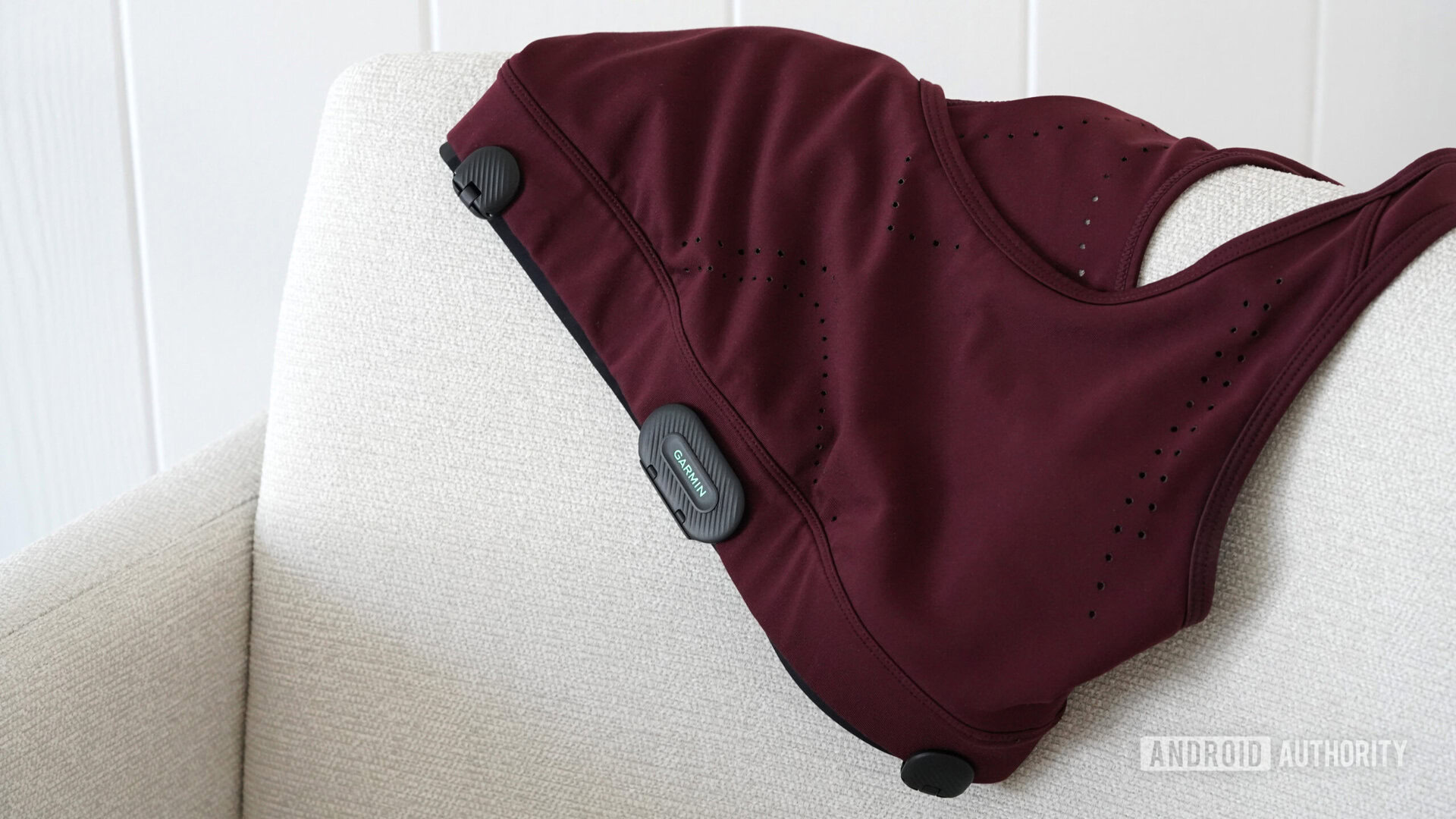
Here’s where things get interesting. Unlike traditional chest straps, which wrap around your ribs like a small but mighty hug, the HRM-FIT is designed to attach to users’ sports bras. More specifically, the device is made for clipping onto medium- and high-support sports bras, the types generally used for high activity (think jogs vs yoga). Because the goal for any sensor is minimal movement, the HRM-FIT works best on bras with tighter bands, which will restrict the device from slipping.
Attaching the band is easy. The device features two central and two outer clips that clamp onto the band of your sports bra with nondestructive teeth. There’s a bit of fine-tuning as you adjust the clips to stretch it to rest flush against your chest, but overall, it’s a quick process. Opening the clips to remove or scoot the strap is slightly more trying and may cost a nail. I typically wear loose-fitting workout attire, including my tees and tanks. Under my clothes, the band was unobtrusive. Under form-fitting options, however, the additional bulge from the band side clips would be visible. Personally, my labored breathing is enough to dissuade me from worrying about appearances at the gym.
The strap is designed to clip to users' compatible sports bras rather than wrap around their chests.
As far as feel, the HRM-FIT is lightweight, but during the first few workouts, I found the band distracting. I kept worrying it would fall down or slide around too much and fail to accurately track my heart rate. However, it never actually fell off, and as mentioned, it proved highly accurate. Like on other chest straps, you do need to wet the electrodes before your workout, a process that always makes me feel like I’m prematurely sweating. Otherwise, though you’ll certainly be aware that you are wearing something attached to your bra, it’s by no means uncomfortable.
And yet, I don’t feel like the device solves an existing market pain. I’ll be the first to admit chest straps can be tight and constricting, but the HRM-FIT only works with similarly fitting sports bras. If you typically prefer sports bras on the looser side, the device won’t jive. Likewise, your bra must have a band between 3/4 inch and 2 inches wide, a range that covers many but not all bra designs. It also can’t have front embellishments like zippers, which would interfere with the HRM-FIT’s clips. By the end of reviewing Garmin’s sports bra fit guide, I realized I only had a select number of compatible options.
While it's nice to see Garmin continue to focus on women users, the device doesn't necessarily solve any existing problems.
When motivation can be fleeting, I don’t want an extra step (hunting down the right sports bra) between me and starting a workout. Again, this is a subjective take, and this design might be much more attractive than a traditional chest strap for some athletes. Just note that this option is quite a bit more expensive than alternative chest straps from Garmin. If the mini boa constrictor squeeze of a regular chest strap doesn’t bother you, you might want to stick with this cheaper option.
A band with bandwidth
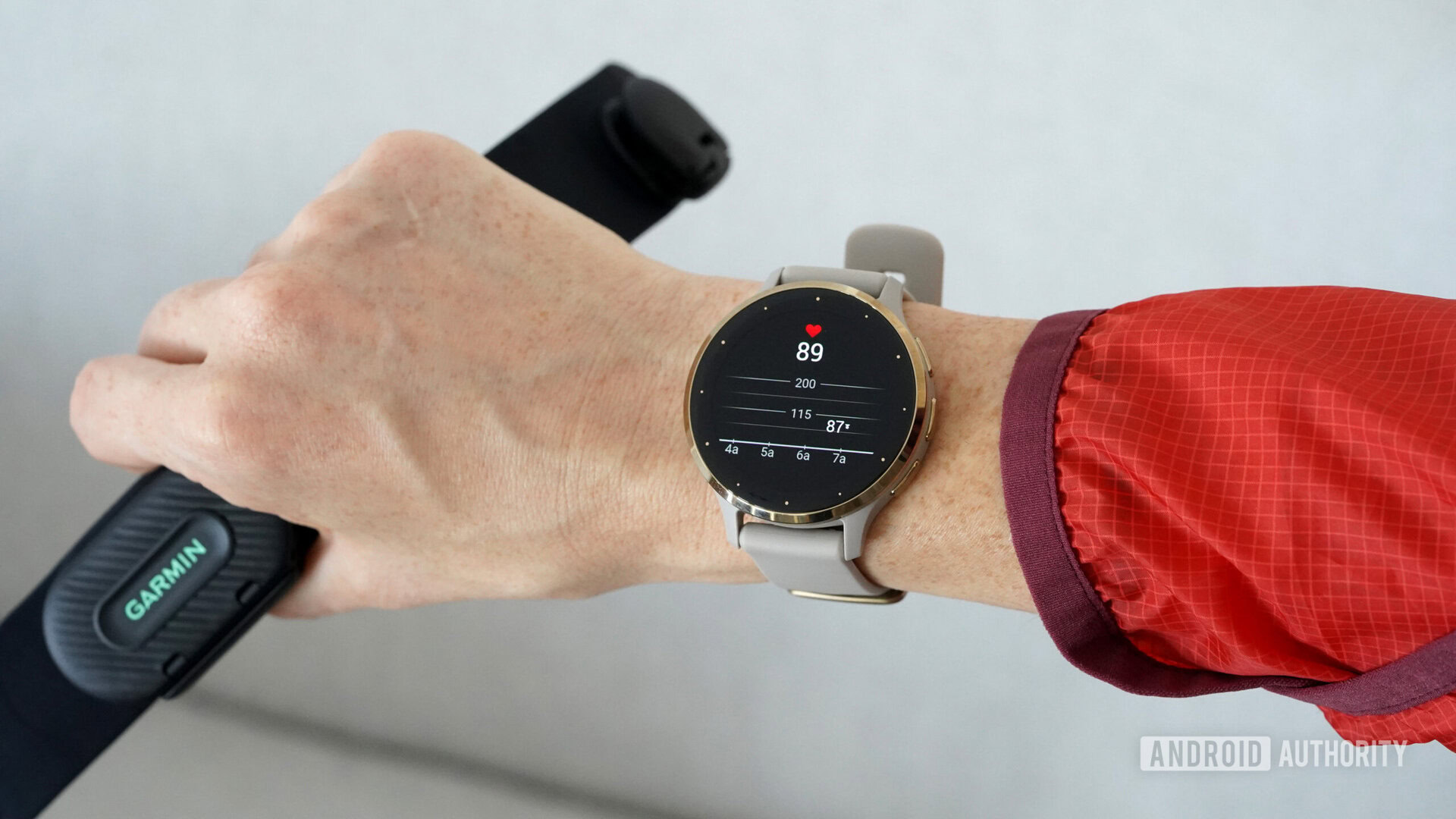
Compared to a basic chest strap, the HRM-FIT’s loftier price isn’t just because of its unique design. Like the Garmin HRM PRO Plus (a higher-end chest strap), the device boasts several additional features and metrics, especially for those sporting a Garmin watch on their wrists. The device offers offline workout support and records pace, distance, running power, and running dynamics. Running dynamics, in particular, is pretty niche, but if you are shopping for a heart rate monitor, there’s a decent chance you are a data junkie and might enjoy more stats. These include form guidance such as vertical oscillation, ground contact time balance, stride length, and vertical ratio.
Beyond its unique design, the HRM-Fit offers extensive compatibility and advanced tracking tools.
For the purpose of this review, I used the strap paired with my Garmin Venu 3. I was able to reliably record heart rate data with the band and then seamlessly download the data at the end of my workouts. Though many of Garmin’s smartwatches offer impressive heart rate monitoring from the wrist, some workouts, like swimming, benefit from chest-based readings. If you don’t have a watch, the band will report heart rate, intensity minutes, steps, and calorie data via your smartphone app.
The band can also be synced with compatible cycling computers and fitness equipment. It supports unlimited ANT+ connections and up to three Bluetooth connections.
Garmin HRM-FIT review: Up to Garmin’s typical standards
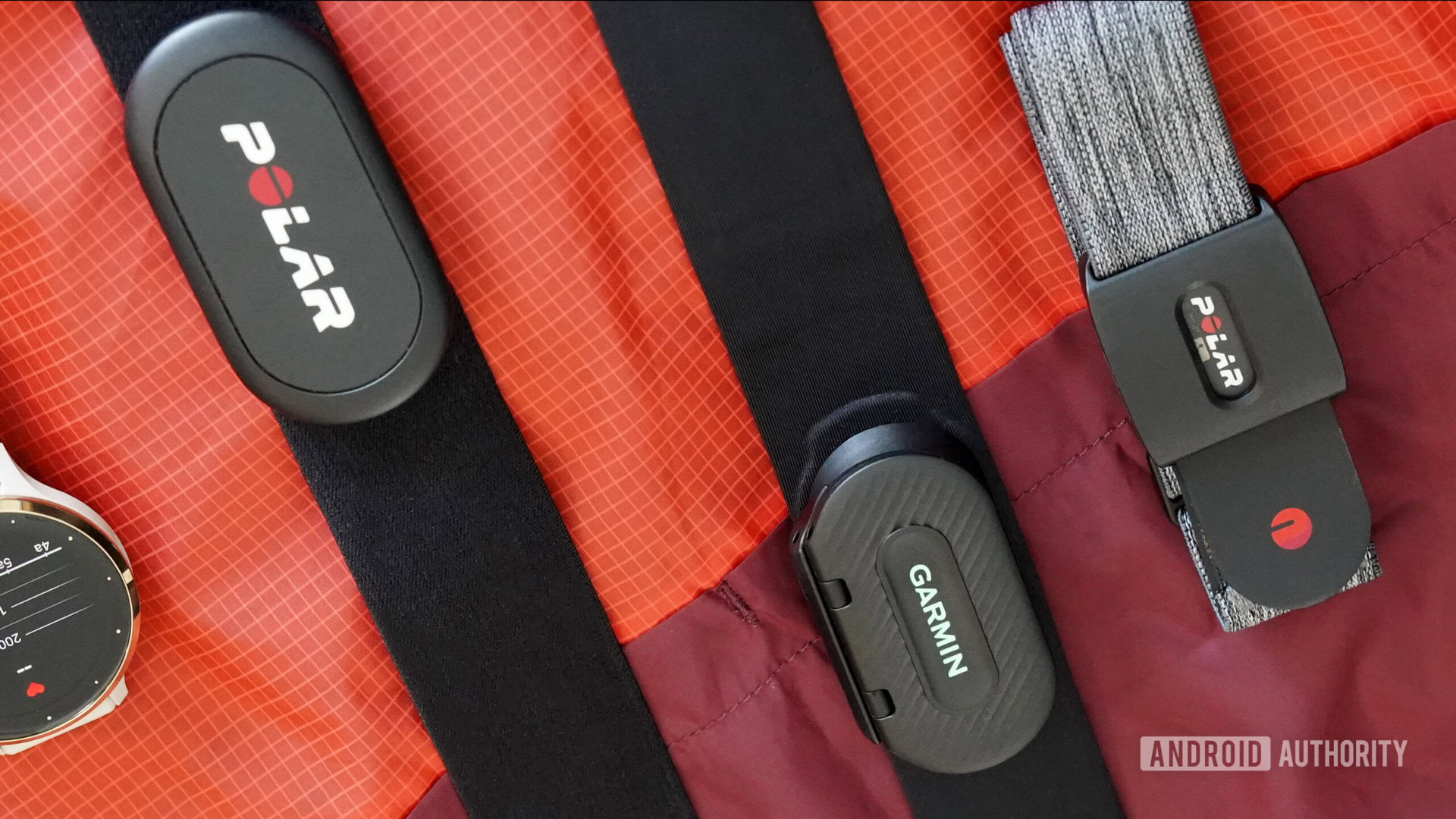
From an accuracy and connectivity standpoint, the HRM-FIT is a great product. It delivers reliable heart rate data and syncs up with compatible equipment, watches, and cycling computers. It also offers advanced metrics like Running Dynamics and Running Power, as expected from a strap at this price point. Despite my initial skepticism, the unique design stayed in place, and felt secure during various workout types. Most importantly, it also echoes Garmin’s commitment to serving female athletes.
And yet, with all that said, I don’t see myself using this band over a typical chest strap. While I love Garmin’s intention, I just don’t see an inherent benefit to the design compared to a regular chest strap. While others might appreciate that the HRM-FIT isn’t tight or constricting, I prefer wearing regular chest straps that are straightforward and independent of clothing. Opening HRM-Fit’s clips to attach it to my sports bra is slightly unpleasant, and some of my sports bras wouldn’t necessarily work. If you are someone who consistently wears medium or high-support sports bras, you probably won’t have an issue, though.

